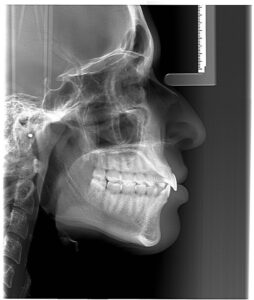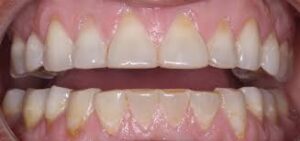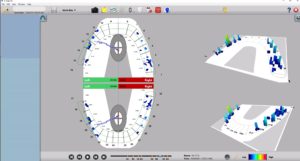
“It’s all in how you arrange the thing… the careful balance of the design is the motion.”
– Andrew Wyeth
I love this quote. It is a well-stated, yet simple, example of maintaining a sense of balance in our lives. As a neuromuscular dentist (one of the few in Macomb and Oakland counties), I’ve learned that a life in balance encompasses far more than keeping balanced work-life schedules or maintaining a balanced diet.
While these are important, of course, our physical structures must also be in proper balance. That’s how they are designed.
Even when the body is out of balance, such as one leg being shorter than the other, the body tries to adjust to compensate. This may occur in an altered gait or how an individual leans to one side. Yet, these adjustments eventually have consequences, oftentimes in other areas.
For example, having one leg shorter may result in hip or back problems. Another example, as is detected through neuromuscular dentistry, is TMJ disorder.
TMJ disorder, often referred to simply as “TMJ,” refers to problems associated with the temporomandibular joints. These are your jaw joints where the lower jaw is “hinged” to the skull. Since the upper jaw is a part of the skull, it does not move. However, the lower jaw moves a lot.
The lower jaw and thus, the jaw joints, move every time you bite, chew, speak, laugh, sneeze, and even slightly every time you swallow. The jaw joints, located just in front of the ears, house the joint’s condyle. These are the end portions of the jaw, which rotate around whenever the lower jaw moves.
With all the back-&-forth movement of the condyle, its balance within the joint is very important. Without it moving fluidly, it can eventually cause the joint and muscles surrounding it to become strained.
This frequent strain can lead to inflammation that reaches out to other areas.
For example, the delicate mechanisms of the inner ear are in close proximity to the jaw joints. When the inflammation reaches this area, ear ringing and dizziness can occur. However, the TMJ can be easily overlooked as the cause. Without specific training in neuromuscular dentistry, the connection between the ears and the jaw joints can be a hidden problem.
Typically, the origination of TMJ problems lies in the mouth from misaligned teeth. Although genetic disparities or accidents or injuries can disrupt the balance within the jaw joints, bite misalignment is the true culprit in the majority of problems.
The disparity of the jaw joints and their far reaching implications can emerge in various ways. One is how TMJ disorder can cause chipped teeth.
When the upper teeth do not meet the lower teeth harmoniously, the teeth don’t always come together properly in chewing or speaking. When teeth hit one another improperly, it can result in chips, fractures or even breaks in teeth.
Often when a tooth breaks, it is because the teeth have been coming together incorrectly for a longer period than the patient realizes. The tooth may have had a fracture for quite some time and finally broke from a surprisingly mild “hit.” I’m never surprised to hear a patient tell me it occurred when they were eating a soft sandwich or an apple.
These foods didn’t cause the tooth to break, of course. The actions involved in chewing these were simply all the tooth’s fracture could handle and, finally, it gave way.
Another surprising association of TMJ problems emerges in the form of frequent headaches or even migraines. When stress or strain within the jaw joints occurs, the inflammation extends to the facial, neck and shoulder muscles. This causes the muscles in the head to become inflamed and tense, with headaches becoming a common occurrence.
Too, bite misalignment can cause night-time clenching and grinding of teeth. During sleep, the strained jaws make a subconscious effort to find a proper resting position. This actually backfires, as it can lead to a back-&-forth movement that exerts an enormous amount of added pressure on the jaws. Known as ’bruxing,’ this can be so intense it is able to wear down and flatten the tops of teeth.
Another form of bruxing is clenching during sleep. When the teeth clench together, it can be so intense that the force is enough to crack a walnut. You can imagine that this can lead to fractured teeth. And, to no surprise, the intensity can cause the individual to wake up each morning with sore jaw joints and headaches.
A neuromuscular dentist has a unique understanding of the disruptions to craniofacial interactions. This area of dentistry enables these dentists to incorporate neuromuscular considerations into restorative and cosmetic dental treatment. This helps patients avoid the far-reaching problems of bite misalignment. And, this dentist is able to help affected patients overcome problems they have been struggling with for years.
In our Shelby Township dental office, we combine the advanced skills of neuromuscular dentistry with specific technology to detect bite disparities. By understanding the particular points of disruption, we are able to create the most conservative treatment plan possible. A few of these high-tech features include:
• Cone Beam 3D imaging – This system captures clear, concise and intricate views at the lowest radiation levels possible. In one pass, these images are ideal for the assessment of the jaws and evaluation of the temporomandibular joints.
• BioPak – This system records the functions and congruity of the upper and lower jaw, jaw joints, and associated muscles at various ranges. This information is a significant aid in proper diagnosis and treatment planning for TMJ disorder as well as sleep disorders and cranio-facial pain.
• TEKSCAN (T-Scan™) – This is the only technology that shows the measured force and timing of chewing surfaces as they come together in various functions for the overall bite.
If you have symptoms that may include:
– frequent headaches and/or migraines
– jaw soreness
– ear ringing
– dizziness
– tingling fingers
– muscle soreness in the face, neck or shoulder(s)
– jaw popping
– difficulty opening the mouth fully
Or, have had teeth become chipped, broken, worn or fractured, let’s discuss your options and the diagnostic process during a no-cost consultation. Begin by calling 586-739-2155 or Tap Here. During this private time together, I’ll answer your questions and explain the treatment that may be best for your needs.
You’re also invited to learn more about treatment of TMJ disorder in our dental office: DrBarbatTMJ
And, for a brief tour of our complete care dental office, enjoy: DrBarbatOfficeTour